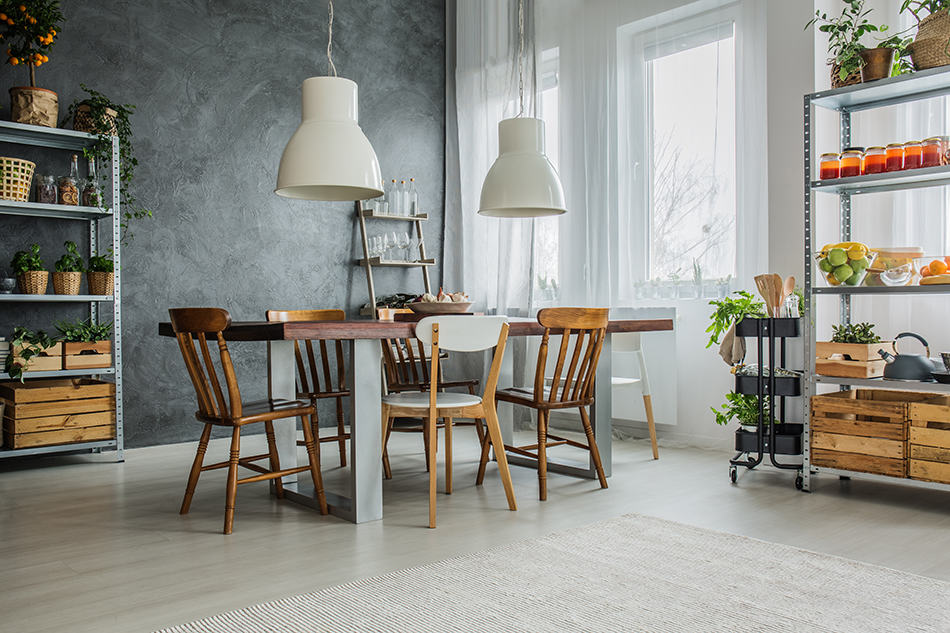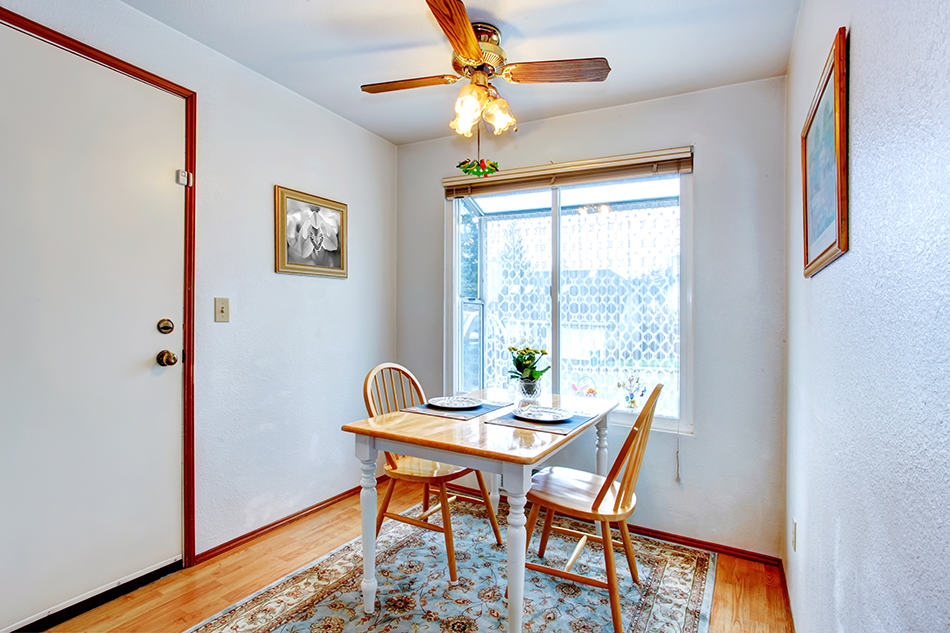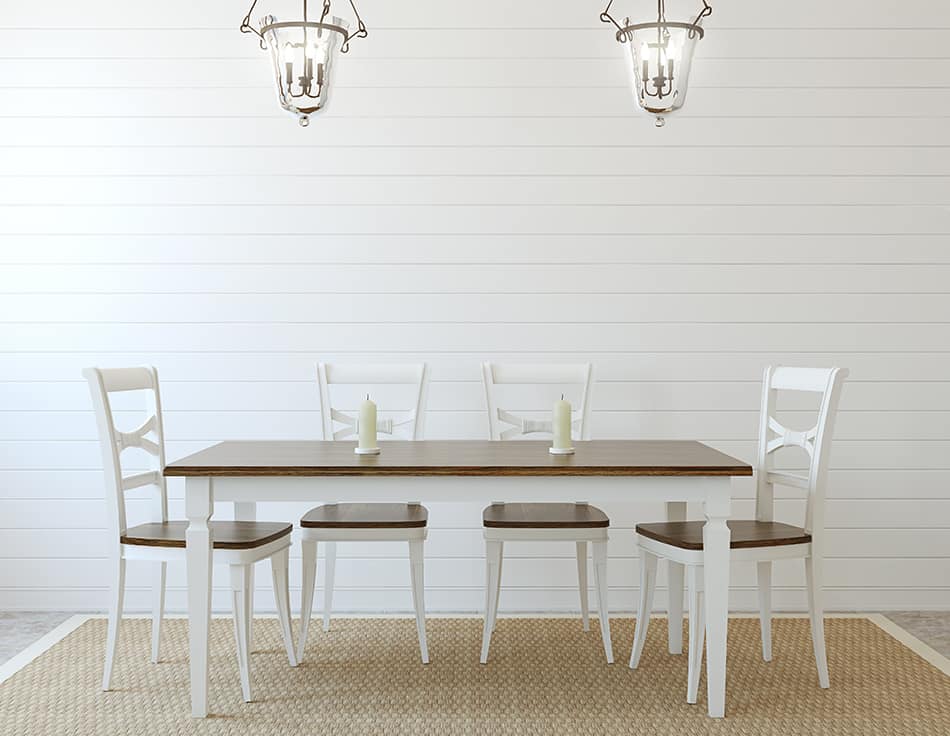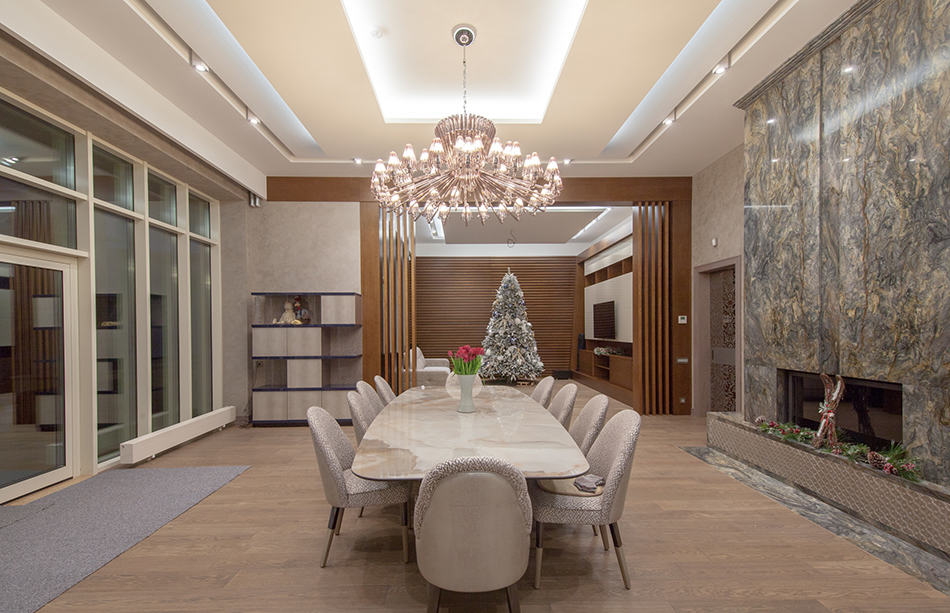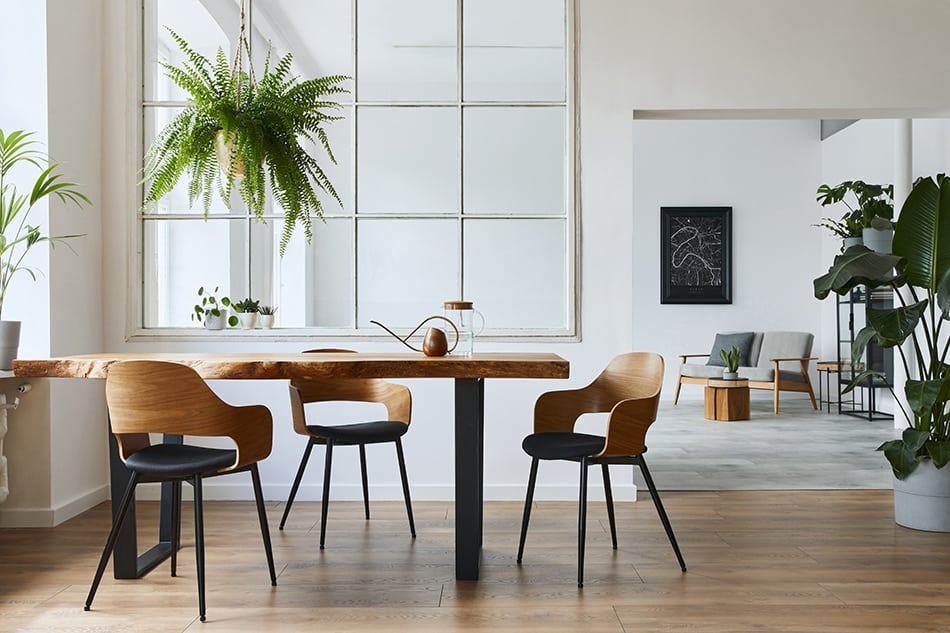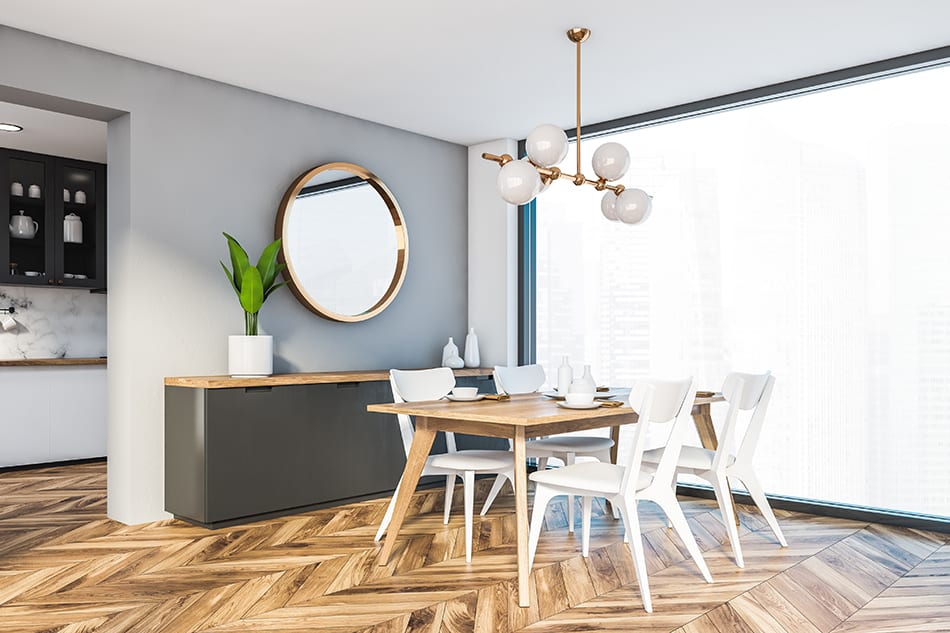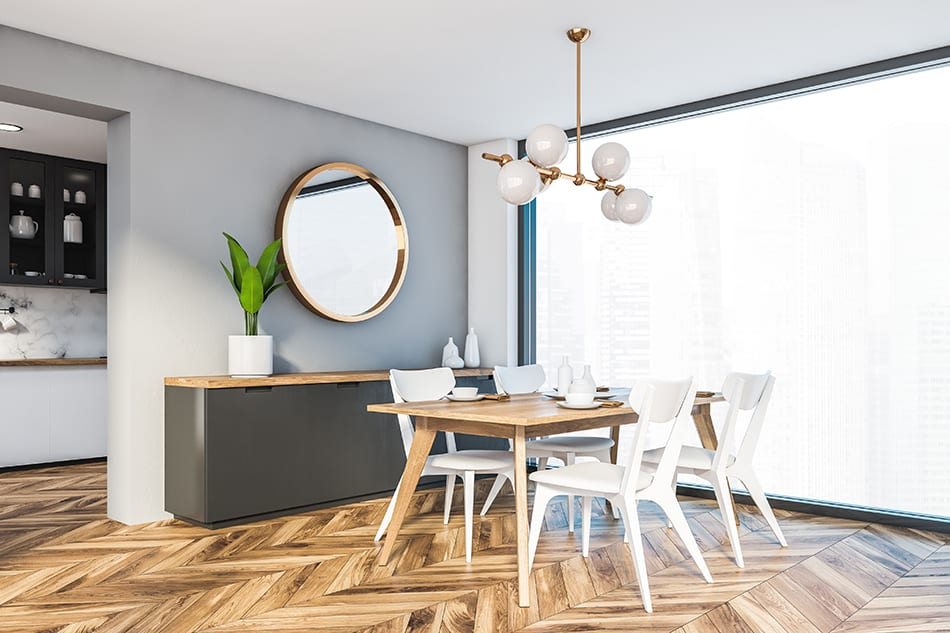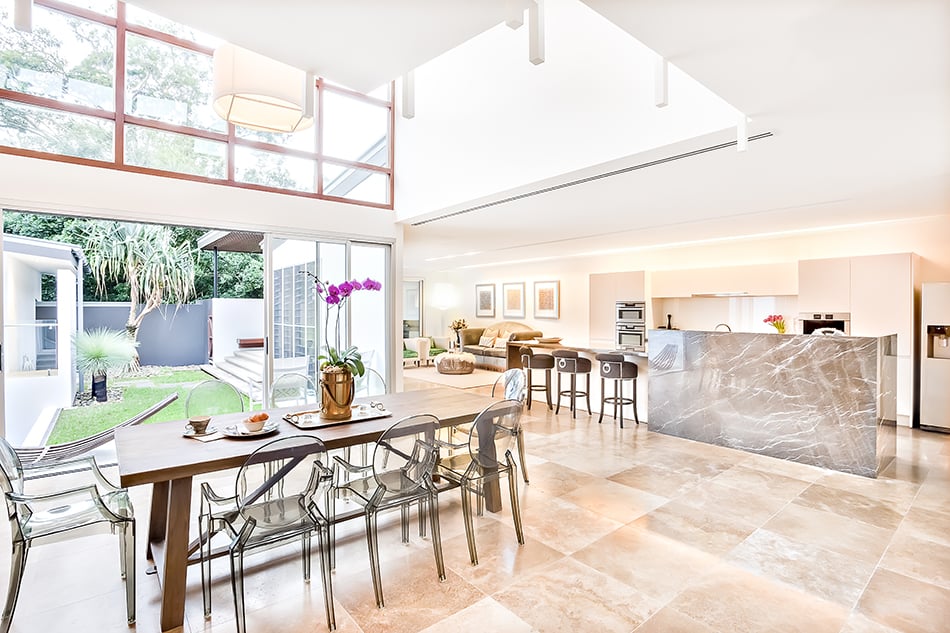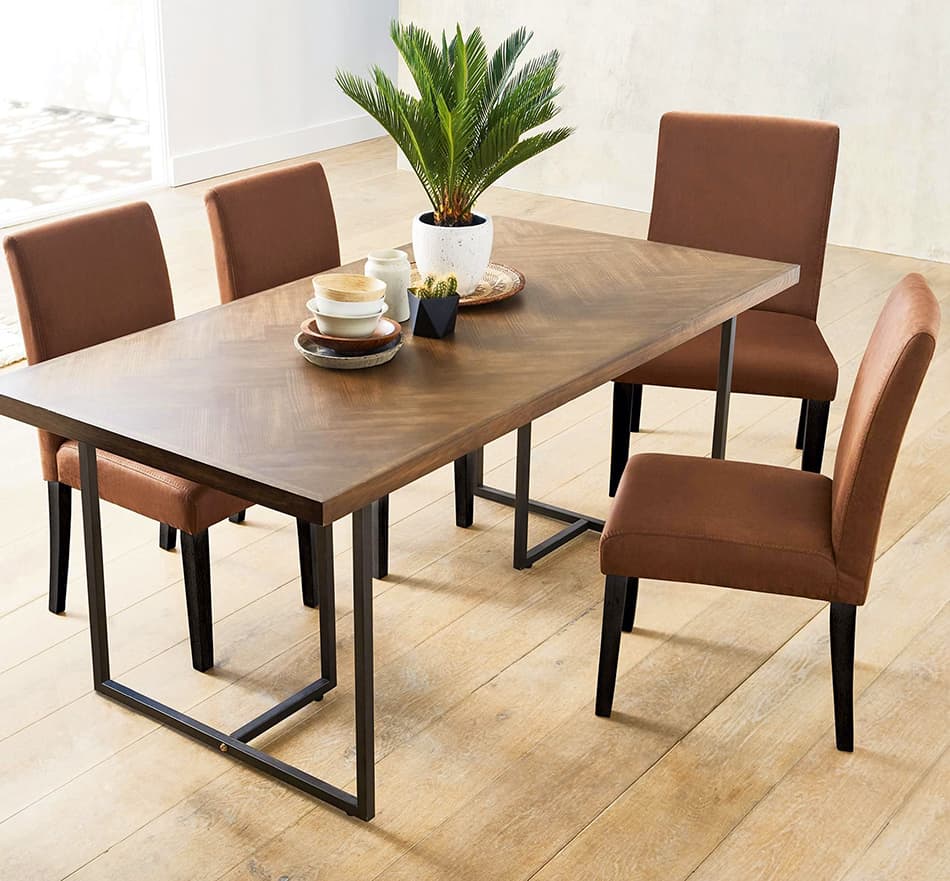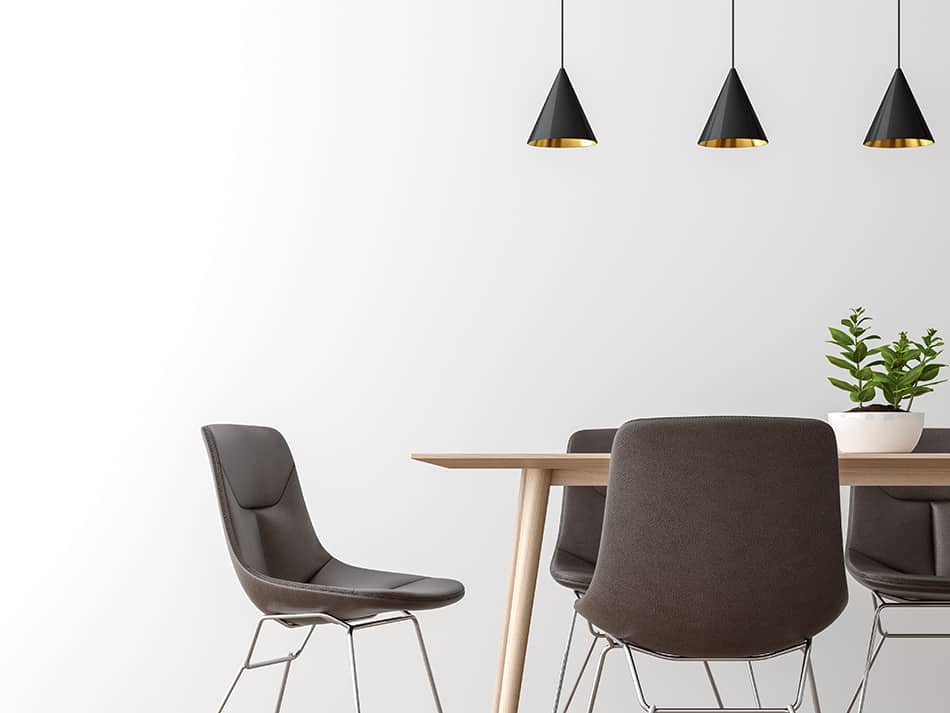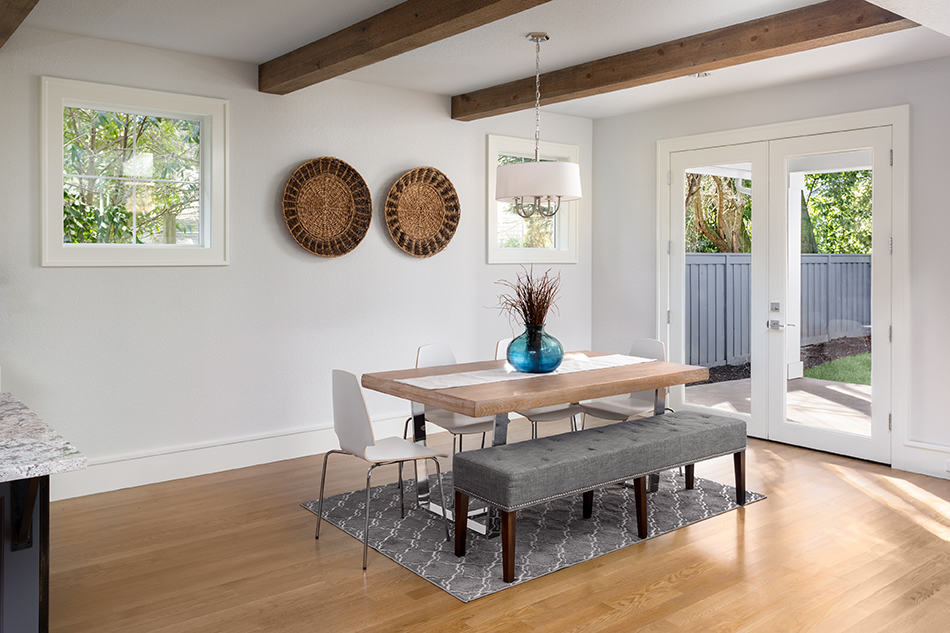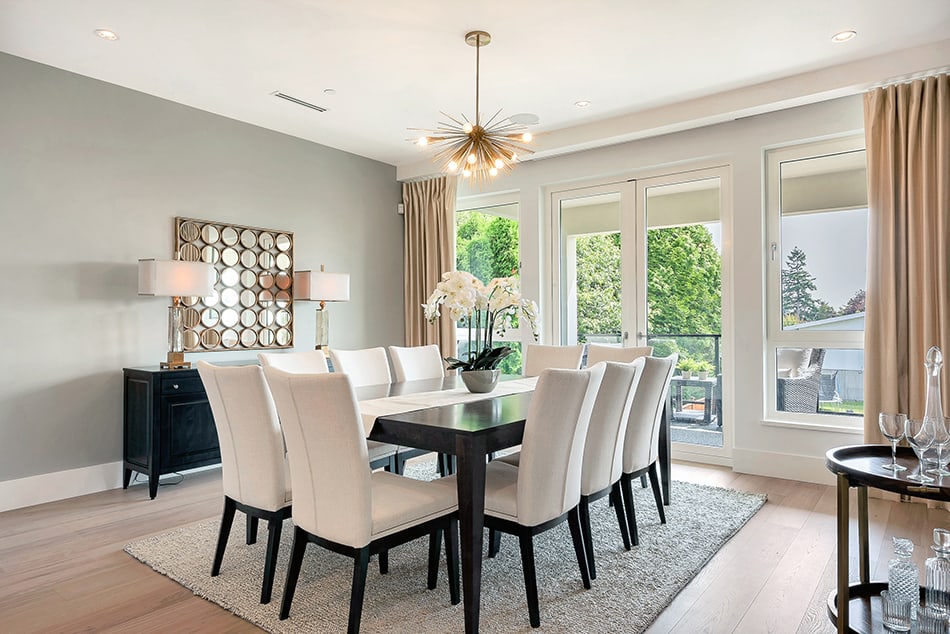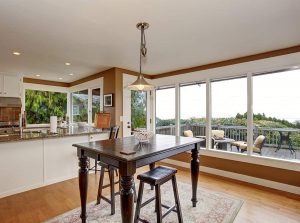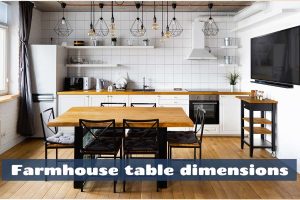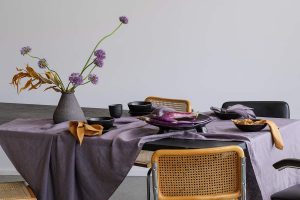A dining room is part of a home or residential unit where family members and guests can sit together and enjoy their meals. As such, this area should be presentable and inviting; thus, you need to place the right furniture, decor, and other essential items in the room.
As you know, these objects will require sufficient space. For this reason, it is vital to consider the size of your dining room when planning to build a house. So, what is the average size of a dining room?
Different Sizes of a Dining Room
In general, most architectural plans state that the average size of a dining room in the U.S. is 14 by 16 feet or 200 square feet. With this space, you can place a hutch, dining table, chairs, and various decorations in the room. However, not all houses or residential units will have this much space. So, what are the other sizes of a dining room?
Small Dining Room
Typically, a small dining room will have a dimension of 11 by 11 feet. With this size, four people can move around the room comfortably. Plus, it has enough space for a dining table with a dimension of 34 inches (width) by 48 inches (length).
Medium Dining Room
A medium-sized dining room has a dimension of about 11 by 14 feet, and it has enough space for six people. Additionally, you can also place a dining table with a dimension of 36 inches (width) by 5 feet 10 inches (length). Also, you can put a small buffet table in a medium dining room.
Large Dining Room
A large dining room will have a dimension of at least 11 by 16 feet. With this size, you can place a dining table with a dimension of at least 36 inches (width) by 8 feet (length). Aside from that, a large dining room has enough space for eight or more people to move around comfortably.
Ways to Expand Dining Room Space
Use Adjacent Space
If you have a small dining room, you can make it bigger by using an adjacent space. For example, the size of your dining room is 11 by 11 feet. You can expand the size of your room by using the adjacent hallway.
By taking down a wall, you’re removing the borders of your dining room and hallway. But, you’re also making your dining room bigger and keep the traffic flow the same.
Incorporate Mirrors and Windows
If you can’t borrow space from another room, you can also make your room look bigger by incorporating mirrors and windows. Remember, mirrors can create an illusion of spaciousness. As such, you can make your dining room appear large and spacious by simply hanging a large mirror on your wall.
Another great idea is to build a wall of windows and place your dining table and chair near the wall to create an open feeling. You can also put some extra chairs in your kitchen. That way, if you have guests, you can use the chairs for additional seating.
Opt for High Ceilings
Another great trick to make your small dining room look larger is to opt for a vaulted ceiling. Instead of being flat, this type of ceiling extends upward from the walls to the center, creating a triangle. Remember, a vaulted ceiling will not only make your dining room spacious but elegant as well. This is especially true if you install a chandelier in the room.
Build Your Dining Room Next to an Outdoor Space
Another great way to expand the size of your dining room is to build it next to a deck or porch. Afterward, you can add French doors to the wall. That way, when you’re grilling outdoors, you can open the French doors and use the outdoor space as part of your dining room.
Other Factors to Consider When Designing a Dining Room
Dining Table
As you know, a dining table is the centerpiece of your dining room. As such, it is vital to pick the right one. Unfortunately, this piece of furniture comes in various shapes and sizes, so choosing the perfect table can be confusing.
When buying a dining table, always consider the seating capacity, which should be enough for you and your family members. As much as possible, you should avoid picking a huge dining table because it can make the room look small.
When it comes to shape, a rectangular dining table is best for large dining rooms. A square table, on the other hand, is ideal in a square dining room for a cohesive look. Round or circular are recommended for small dining rooms.
Of course, the material of the dining table is also important. As much as possible, you should pick a dining table made with durable materials so that it will last long. The design of the table should also blend with the other decor of your room.
Lighting
Another important element of a dining room is the lighting. Remember, the right light fixture will make your room look sophisticated, relaxing, and inviting.
Aside from ceiling lights, an elegant chandelier is also a great fixture you can install in your dining room; however, its size should be proportionate with your dining table.
Aside from that, the height of the chandelier is also vital; thus, you need to install it approximately 30 inches above the surface of your dining table. If you have a large dining room, it is best to pick a chandelier with more bulbs. That way, it can brighten the whole room.
When picking a chandelier, you should choose a design that will complement your dining room. Ideally, a pendant chandelier will blend well with round or circular dining tables. If you have a rectangular dining table, you can opt for a linear suspension.
Aside from a chandelier, a track or monorail lighting will also work well in a dining room because it allows you to highlight the architectural elements of your room, giving the room more visual interest.
Windows and Doors
Windows and doors are other vital elements of a dining room. For this reason, they should be installed in the right places so that you can optimize their function.
As mentioned above, installing French doors on a wall that separates your dining room from your outdoor space is a good idea. The reason is that it can help extend your dining room space by allowing you to use your porch or deck as a part of your dining room. Plus, a French door can allow the natural light to enter the room, making the room look bigger.
As for windows, you should opt for large windows for your dining room. That way, they can allow adequate amounts of natural light to enter the room. Plus, large windows can also make your room more spacious.
Overall Design
Always remember that your furniture, decor, and other dining room essentials should complement each other for a cohesive look.
When designing or decorating your dining room, you can also create a visual contrast to make the room look more interesting. There are various ways to do this. For instance, you can choose different colors for your furniture and decorations.
However, the colors you should pick must blend well with each other. An example of a color combination you can use for a dining room is white and beige. This combo will not only make the room look elegant but spacious as well.
Aside from that, you can also add visual contrast by placing a rug underneath your dining table or a vibrant painting on the wall. Again, the color and design of the rug should also match the theme of your room.
Final Thoughts
When placing furniture and decor in your dining room, you must place these items in the right place so that the room will not look crowded. When decorating, you should also consider the people who will use the dining room. As much as possible, all your family members should be able to move comfortably around the room.
Aside from that, you should also keep in mind that the people who will eat at the dining table should be comfortable. Ideally, they should be able to slide their chair back and get out of the chair with ease. As such, there should be adequate space between the chairs.
All in all, a dining room should be comfortable, inviting, and relaxing. Additionally, it should have enough space to accommodate all your family members and your belongings. In general, the average size of a dining room is 14 by 16 feet.
Still, you can opt for a smaller or larger dining room, depending on the number of people who will use the room and the objects you’re going to place in the room. If your space is not enough, there are various ways to make your room bigger by using a certain portion of the adjacent room.
